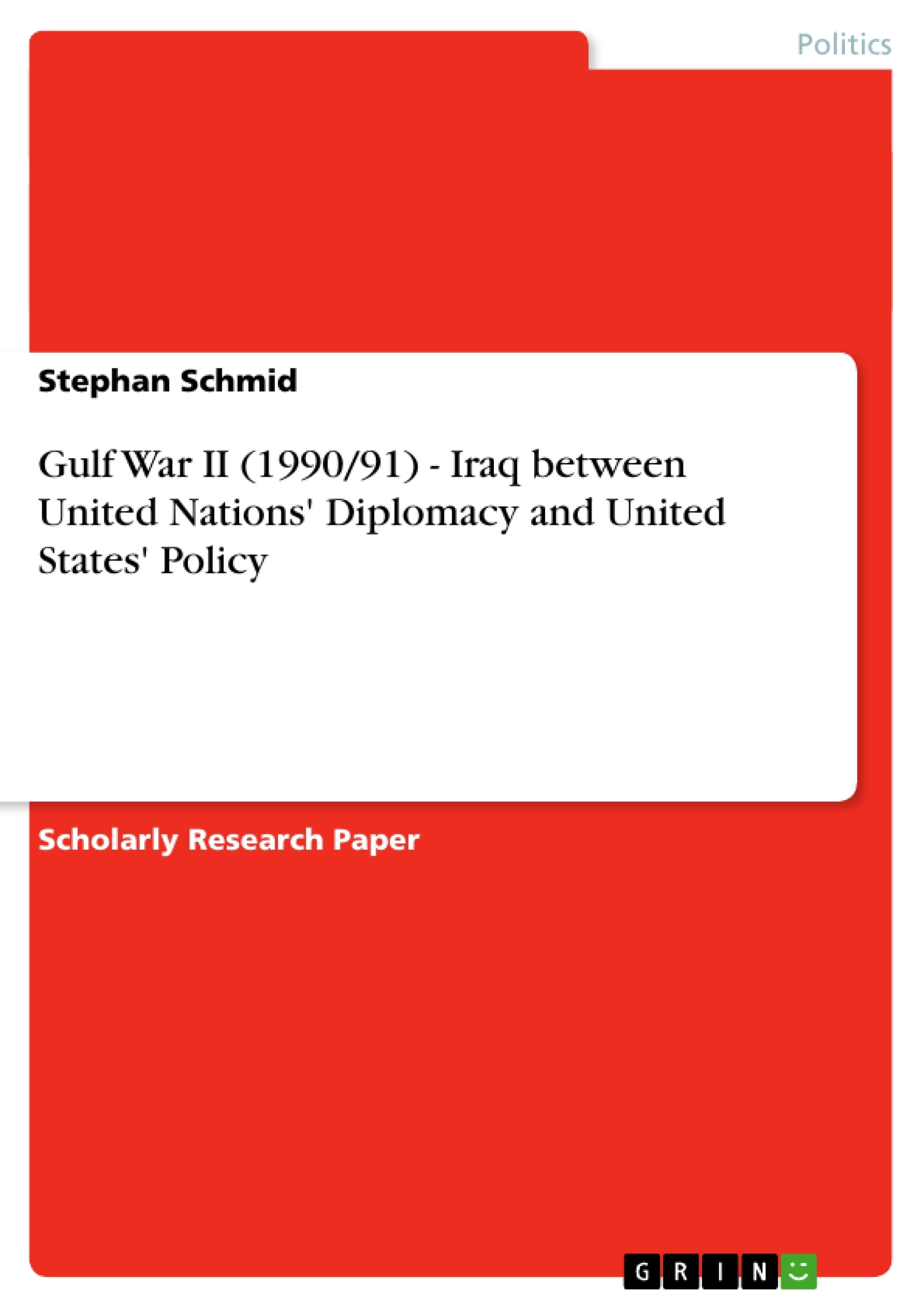Contrary to the first Gulf War between Iraq and Iran, the second Gulf War became very fast internationalized beyond all regional borders even if its roots were mainly placed in the broader regional environment. Especially the US was very concerned about the Iraqi invasion and its impact on the regional and on the international economical, political and military balance. The so called Gulf War III in the year 2003, which rooted to a big part in the second one, showed, that this concern kept on being vital for the US.
This paper mainly focuses on two aspects of the Gulf Crisis of 1990/91, namely on the US Administration, its goals and its policy for the Middle East in general, and the Gulf region and Iraq specifically. Additionally it´ll deal with the role of the United Nations or rather the Security Council and its permanent members during this crisis.
Inhaltsverzeichnis (Table of Contents)
- Introduction
- The Gulf Crisis 1990/1991 – background and facts
- The role of the United Nations and the United States in the Gulf Crisis until the declaration of war against Iraq
- US Policies for the Middle East until 1991
- The UN and its role in the Gulf Crisis
- Security Council and its Resolutions
- Reaction of the permanent members of the Security Council on the Crisis
- Resolution 678 and the Military Staff Committee of the UN
- From Korea to the Gulf Crisis
- Conclusion
Zielsetzung und Themenschwerpunkte (Objectives and Key Themes)
This paper examines the Gulf Crisis of 1990/91, focusing on the US Administration's policy for the Middle East and the role of the United Nations, particularly the Security Council, during the crisis. It analyzes the relationship between US policies and UN resolutions, assessing the extent to which the crisis revived the UN's role and the nature of that role. Additionally, the paper explores whether the war against Iraq solved regional problems or created new ones, identifying the goals of the war and their nature.
- US policy towards the Middle East and Iraq during the Gulf Crisis.
- The role of the United Nations, especially the Security Council, in addressing the crisis.
- The relationship between US policies and UN resolutions.
- The impact of the war against Iraq on regional stability.
- The goals of the war and the extent to which they were achieved.
Zusammenfassung der Kapitel (Chapter Summaries)
- Introduction: This chapter provides an overview of the Gulf Crisis of 1990/91, highlighting its significance for US policy in the Middle East and the role of the United Nations. It discusses the context of the crisis, including the end of the Cold War and the regional conflicts that emerged in its wake.
- The Gulf Crisis 1990/1991 – background and facts: This chapter examines the events leading up to Iraq's invasion of Kuwait, including Saddam Hussein's motivations and the international response. It discusses the economic pressures facing Iraq, Saddam's ambition for regional hegemony, and the miscalculations that led to the formation of a broad coalition against him.
- The role of the United Nations and the United States in the Gulf Crisis until the declaration of war against Iraq: This chapter explores the roles of the United Nations and the United States in the Gulf Crisis. It analyzes US policy in the Middle East prior to 1991, the UN's response to the crisis, and the interplay between US politics and UN resolutions. It also examines the impact of the crisis on the UN's role in international affairs.
Schlüsselwörter (Keywords)
The key terms and concepts explored in this text include the Gulf Crisis of 1990/1991, US policy in the Middle East, the role of the United Nations, the Security Council, the Iraqi invasion of Kuwait, Saddam Hussein, regional hegemony, international law, and the impact of the war against Iraq on regional stability.
- Citation du texte
- Stephan Schmid (Auteur), 2006, Gulf War II (1990/91) - Iraq between United Nations' Diplomacy and United States' Policy, Munich, GRIN Verlag, https://www.grin.com/document/80912



